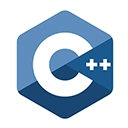C++ is a widely adopted programming language in the financial industry, especially for quantitative analysis, risk management, and algorithmic trading. Its speed, low-level control, and extensive libraries make it a top choice for developing applications that deal with large datasets, complex mathematical models, and real-time trading strategies. In this guide, we'll introduce you to the use of C++ in financial applications and provide a sample code example for a simple quantitative analysis task.
1. C++ in Financial Applications
C++ is favored in the financial industry for several reasons:
- Performance: C++ offers the high performance required for processing large financial datasets and executing real-time trading strategies.
- Low-Level Control: It allows for fine-grained control over hardware and memory, which is critical for high-frequency trading and risk management systems.
- Libraries: C++ is compatible with numerous financial libraries, such as QuantLib and Boost, which provide tools for pricing, risk analysis, and quantitative modeling.
2. Sample Code: Quantitative Analysis in C++
Let's provide a simplified code example to illustrate how C++ can be used for quantitative analysis in finance. In practice, quantitative analysis tasks are complex and involve intricate mathematical models and large datasets. Here's a basic pseudocode representation of calculating the mean return of a portfolio:
#include <iostream>
#include <vector>
#include <numeric>
int main() {
// Define a portfolio of daily returns
std::vector<double> returns = {0.02, 0.015, -0.01, 0.03, -0.005};
// Calculate the mean return
double meanReturn = std::accumulate(returns.begin(), returns.end(), 0.0) / returns.size();
// Display the result
std::cout << "Mean return of the portfolio: " << meanReturn << std::endl;
return 0;
}
3. Conclusion
C++ is a powerful tool in the financial industry, providing the performance and control needed for quantitative analysis, risk management, and algorithmic trading. The provided example is a simplified representation of a quantitative analysis task, but real-world financial applications involve complex mathematical models, big data, and real-time decision-making.

